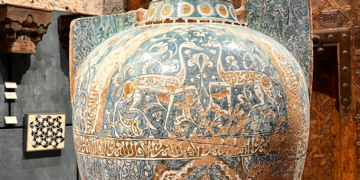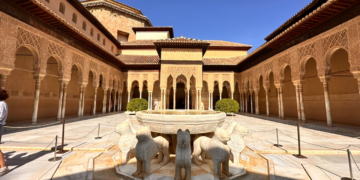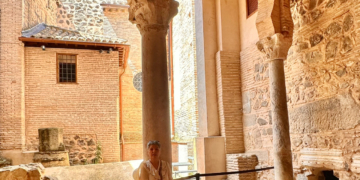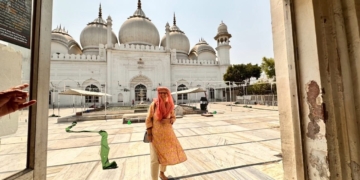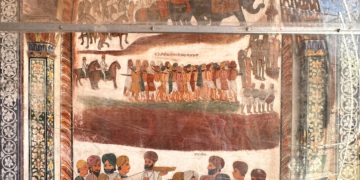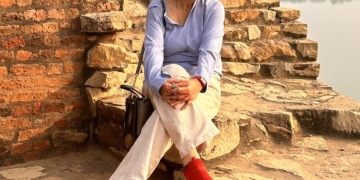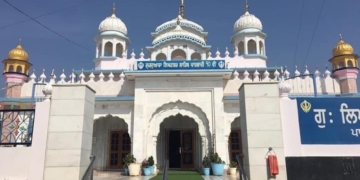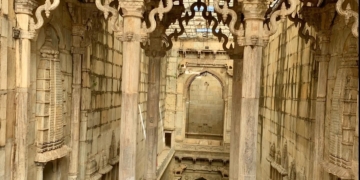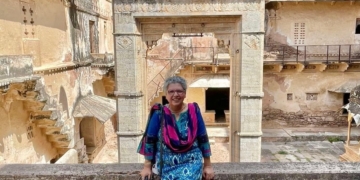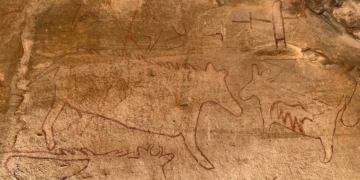Like Faiz, we all need to buy a soul and develop a social conscience.
— Read on newscentral24x7.com/bsf-jawan-killed-six-injured-as-pakistan-shells-border-out-posts-villages/
The Relevance Of Faiz’s Poetry In Today’s World
Faiz’s poetry depicted revolution, resistance, and change.
By Rana SafviOn May 22, 2018 Last updated Jun 4, 2018

Faiz Ahmed Faiz, one of the most celebrated Urdu poets, was born in 1911 in Sialkot in undivided India. As his grandson, Ali Madeeh Hashmi (son of Muneeza Hashmi) says, “Faiz is gone but his voice is still with us in his poetry, and so are those things in the world that so rankled and infuriated him: exploitation, injustice, tyranny, oppression.”
He was a part of the Progressive Writer’s Movement (PWA) and a member of the Communist Party. His poetry depicted revolution, resistance, and change, which is known in Urdu as gham e daura’n (sorrows of the material world) and not gham e jaana’n (sorrows of the beloved). Like other progressive poets — Sahir Ludhianvi, Ali Sardar Jafri, Josh Malihabadi, Majaz and Kaifi Azmi — Faiz’s verses were meant to invoke passion for social justice, change and revolutionary spirit. That is why this period saw the blossoming of the nazm (rhymed or free verse) rather than the ghazal that was more suitable for the poetry of love because of its restrictions of composition.
1. It was no surprise that in the wake of the bloody riots that accompanied the partition of India and independence of India and Pakistan, instead of rejoicing he wrote the nazm, Subah e Azaadi on 14th August 1947:
Ye dagh dagh ujala ye shab-gazida sahar
Wo intizar tha jis ka ye wo sahar to nahin
Ye wo sahar to nahin jis ki aarzu le kar
Chale the yaar ki mil jayegi kahin na kahin
These scarred rays of light, this wounded dawn
This is not the dawn for which we yearned
This is not the dawn, longing for which
We set out in hope of surely finding it out there
2. In 1951, Faiz, Sajjad Zaheer, along with some army officers was arrested in the Rawalpindi Conspiracy case which was an alleged attempted coup d’etat against the government of Liaqat Ali Khan. Faiz was in jail till 1955 and this was the period that saw his best writing. He was denied a pen and paper during his solitary confinement in Sargodha and Lyallpur. He smuggled his poems out through the kind offices of the jailors and jail personnel. It was here he wrote:
Mataa-e lauh-o qalam chhin gayi to kya gham hai
Ke khoon-e dil mein dubo li hain ungliya’n main ne
Zabaan pe mohr lagi hai to kya, ke rakh di hai
Har ek halqa-e zanjeer mein zabaan main ne
So what slate and pen have been snatched away from me?
For I have dipped my fingers in my heart’s blood
So what if seals have been put on my tongue?
For I have turned every link of my chain into a tongue!
3. In jail, he wrote Zindan ki ek sham (An evening in Prison)
Dil se paiham khayal kahta hai
Itni shirin hai zindagi is pal
Zulm ka zahr gholne wale
Kaamran ho sakenge aaj na kal
Jalwa-gah-e-visal ki shaame’n
Wo bujha bhi chuke agar to kya
Chand ko gul kare’n to hum jaane’n
The heart keeps thinking
So sweet is life at this moment
Those who prepare the poison of oppression
Will succeed neither today nor tomorrow
They may snuff out the light
In the lovers room
I dare them to snuff out the moon!
4. In 1959, he was jailed again under Ayub Khan’s martial law. Once he was taken to a dentist from Lahore jail in a horse cart (tonga). He was in his shackles. The streets of Lahore were familiar to him and people recognised him and started following his tonga. It was then that he wrote:
Chashm-nam jaan-e-shorida kafi nahin
Tohmat-e-ishq-e-poshida kafi nahin
Aaj bazar mein pa-ba-jaulan chalo
Dast-afshan chalo mast o raqsan chalo
Khak-bar-sar chalo Khoon-ba-daman chalo
Raah takta hai sab shahr-e-jaanan chalo
Damp eyes, frenzied soul is not enough
The accusation of hidden love isn’t enough
Walk in the bazar in shackles today
Walk with stars in your hands, a dance in your step
Walk with dust in your head and blood on your clothes
The people of your beloved city await you, walk
5. Despite his stints in jail, exile, and the restrictions on personal freedoms he never gave up hope.
Maana ke yeh sunsaan ghadi, sakht badi hai,
Lekin mere dil, yeh toh faqat ek ghadi hai,
Himmat karo, jeene ko abhi umr padi hai.
I agree that this lonely moment is very tough
But my heart, stay calm, it is just one moment
Stay strong, there is a life ahead of you
6. In 1979, under the dictatorship of Zia-ul Haq, Faiz wrote the iconic “Hum Dekhenge” (We shall see).
At a time when religion was being enforced on the people of Pakistan, Faiz wrote a nazm, which was laden with Islamic imagery and symbols as a critical commentary on Zia’s forced Islamisation of Pakistan. On the first death anniversary of Faiz in 1985, at a time when wearing sarees was banned for ladies, Iqbal Bano, the famous Pakistani singer, came dressed in a black saree and sang Hum Dekhenge to a packed Lahore stadium.
Hum dekhenge,
Laazim hai ke hum bhii dekhe’nge
Hum dekhenge
Wo din ke jis kaa waada hai
Jo lauh-e-azal pe likhaa hai
Hum dekhenge
Jab zulm-o-sitam ke koh-e-giraan
Rooii kii tarah ud jaayenge
Hum mahkoomo’n ke paao’n tale
Jab dhartii dhaR dhaR dhaRkegii
Aur ahl-e-hakam ke sar oopar
Jab bijlii kaR kaR karkegii
Hum dekhenge
We shall see
Definitely, we shall also see
We shall see
That day, which was promised
Which was written on the slate of eternity
We shall see
When the huge mountains of tyranny
Will blow in the wind, like wool
The ground will tremble with a deafening sound
Under the feet of the oppressed
And lightening will strike
Over the heads of the oppressors
We shall see
7. The iconic Bol (Speak) that is an anthem for everyone challenging dictatorship
Bol ki lab aazad hain tere
Bol zaban ab tak teri hai
Tera sutwan jism hai tera
Bol ki jaan ab tak teri hai
Speak for your lips are free
Speak for your tongue is still yours
Your body is frail but it is still yours
Speak for you still have life in you
8. This famous, challenging injustice and ruler’s apathy to problems of the people, is from a ghazal written in Lahore Jail, December 31, 1958
Mit jayegi makhluq to insaaf karoge?
Munsif ho to ab hashr uTha kyun nahin dete
Will you dispense justice when your creation has been annihilated?
If you are a judge why don’t you raise a tumult, now
9. Some verses from another ghazal, asking people to get together:
Jis noor se hai shahr ki deewar darakhshan
Ye Khoon-e-shahida’n hai ki zar-Khana-e-Jam hai
Halqa kiye baithe raho ek shamma ko yaaro
Kuchh raushni baqi to hai har-chand ki kam hai
The light whose reflection has made the city walls replescendent
Is it the blood of martyrs or the treasury of Jamshed?
Make a circle around a candle, friends
Some light still remains, even though it is less
10. And finally some lines from my favourite nazm, which epitomises poetry with a social conscience. It was written in 1936-37 and was a part of Naqsh e Fariyadi published in 1941.
Faiz started this poem with a line from the famous Persian poet, Nizami: “Dil-e-bufro-khatm, jaan-e-khareedun” ( “I have sold my heart and bought a soul”)
Aur bhi dukh hain zamaane mein mohabbat ke siwa
Rahatein aur bhi hain wasl ki raahat ke siwa
Mujhse pehli si mohabbat mere mehboob na maang
More suffering in the world than love, exists
More joy than the joy of union, exist
My love, don’t ask me for that love we shared once
Like Faiz, we all need to buy a soul and develop a social conscience.

